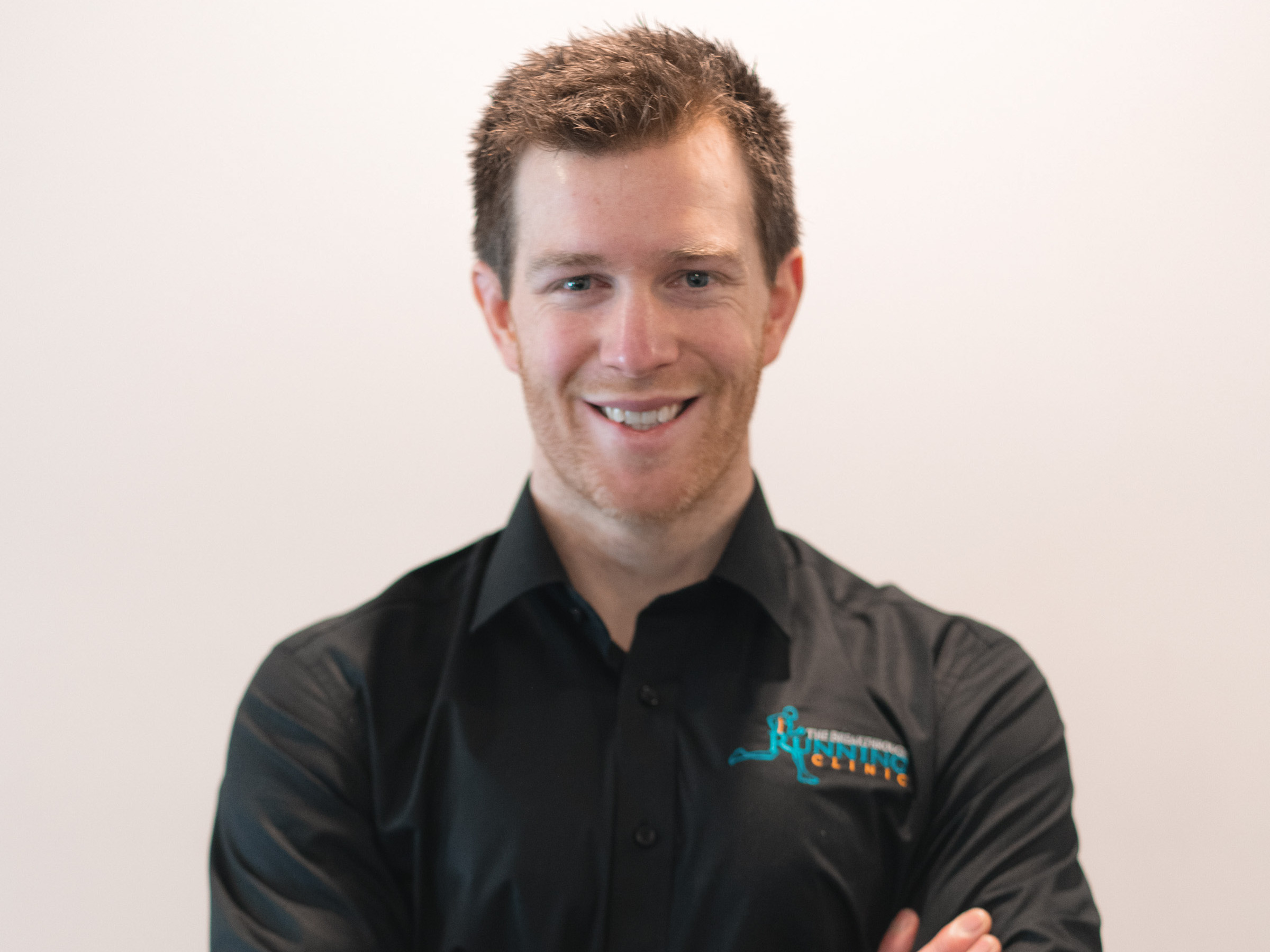
29 Oct Endurance Innovation 76 – Common Running Injuries with Brodie Sharpe
Running physiotherapist and host of the Run Smarter Podcast joins Andrew and Michael to cover the causes, symptoms, and treatment of 3 common running injuries.
Endurance Innovation is now on Patreon! Have a peek at our page and show us some love.
- 2:30 it takes 20+ years for research findings to trickle down to the general public
- 7:00 Plantar Fasciitis / Plantar Fasciopathy
- Causes: rapid change in training load, terrain, shoe type, amount of time spent on your feet in non-training situations
- Symptoms: often very gradual onset with early morning stiffness in the foot / heel. Pain and discomfort often presents outside of training, during daily activity like walking and standing.
- Often the symptoms abate after a warmup
- Easiest early intervention is to undo the acute training / terrain / shoe changes
- Slow, heavy resistance training is prescribed for therapy. Use both eccentric and concentric focus. Big toe dorsi-flexion is a useful add.
- Complete rest is not recommended unless the symptoms are severe. Even in severe cases you only need a day or two.
Taping, massage, orthotics can be useful to help acute symptoms - Prognosis is based on tolerance and is individual. Return to activity follows a trial-and-error approach where training is slowly reintroduced, and symptoms are monitored.
- 14:45 the pain / rest / weakness cycle
- 27:30 some pain is okay with the exception of stress fractures or issues with bone reaction components. In this case, pain is an urgent warning sign that should not be ignored.
- 31:00 identifying stress fractures: different pain symptoms, likely locations
- 33:30 patellofemoral syndrome
- Vague kneecap pain that’s tough to localize
- Caused by overload of the tissues and not poor knee tracking as previously believed
- Therapy prescriptions: manual therapy can potentially help with pain. Loading the tissues like squats, lunges, and variations thereof within pain tolerance
- Gait retraining in runners with serious overstriding
- Possible misdiagnosis
- 52:15 proximal (high) hamstring tendinopathy
- Pain just below the gluteal fold that’s characteristic of other tendon pain. Can be triggered by specific hamstring-load tests
Sitting becomes uncomfortable in more severe cases - Again typically caused by a rapid increase in load, so first step in correction is reducing training volume / intensity
- Therapeutic exercises: bridge variations, deadlifts, Nordic hamstring variations
- Pain just below the gluteal fold that’s characteristic of other tendon pain. Can be triggered by specific hamstring-load tests
Check out Brodie’s well-researched and very accessible podcast on running: The Run Smarter Podcast wherever you get your fix.





No Comments